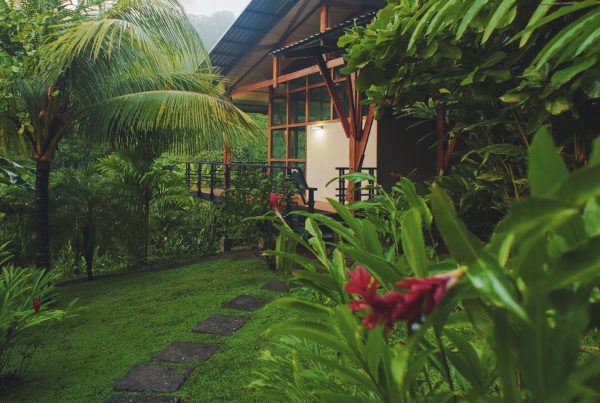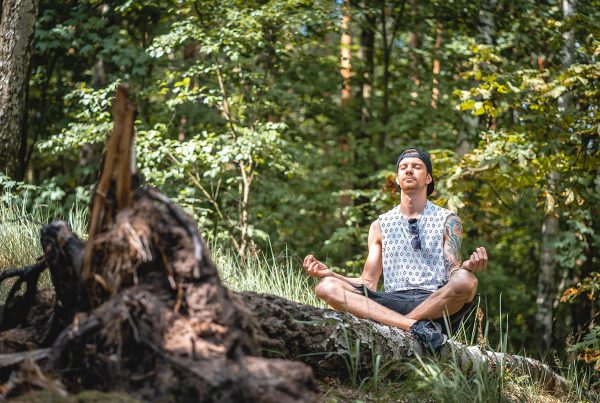A climate-positive future depends on preserving wildlife, reforestation and the indigenous communities of the rainforest
The Amazon Rainforest is wildly misunderstood. While headlines come and go about wildfires, endangered species and indigenous land disputes, the changes needed to protect one of our planet’s most valuable resources often come up short. The Amazon Rainforest Conservancy (ARC) aims to correct this. On a mission to safeguard the threatened tropical rainforest habitat, species and ecosystems in the Peruvian Amazon, they’ve made incredible strides in their conservation efforts, fighting to secure a better future for us all. The impact they’ve had in 2022 is of particular interest as we think about the domino effect saving endangered animal species truly has on our entire population. If you recall, we teamed up with the McKenna Academy to help fund their Jaguar Corridor—but more on that later.
Before diving into ARC’s planetary-shifting work, let’s reiterate one point. Our future depends on the Amazon more than meets the eye, a topic we previously covered. In other words, if the Amazon goes, we all go. What people fail to realize is that for one, 25% of our modern medicines come from the Amazon. That’s leaves, bark, and sap used to make medicines that are typically used to treat cancer, diabetes, arthritis and Alzheimer’s, to name just a few. Or how about the fact that of the estimated 40,000 plant species so far identified, we only know how to use 1%? That’s a mere 400 plants to make medicine, including but not limited to ayahuasca. It’s no surprise many scientists believe the cure to many diseases are held within the rainforest. Third, let’s not forget that wildlife is essential for nature’s normal rhythms, like pollination, sea dispersal and pest control. Predators in particular play an important role in keeping the ecosystem balanced and healthy. If these connections were everyday, top of mind, our relationship to the natural world would probably look a whole lot different.
With a focus on the Cloud Forest region, ARC has made a real dent in conservation efforts. In their recently released Impact Report, they highlighted the progress made in 2022, including the establishment of a wildlife corridor and the reclamation of a Brazilian concession invaded by illegal gold miners. As they look toward the future, their ambitions grow even bigger, aiming to expand conservation efforts, construct a ranger and research station, and support local communities in transitioning to sustainable livelihoods. While there’s mountains of work ahead, today (and everyday) we celebrate key milestones highlighted in their Impact Report.
4 significant milestones from the Amazon Rainforest Conservancy Impact Report
-
- Transforming mercury-poisoned mining pits into bamboo projects: Illegal mining activities have inflicted significant damage on the land, particularly mercury pollution. To address this issue head-on, ARC diligently explored scientific methods for cleaning up the polluted mining pits inherited. Determined to restore these devastated areas, they initiated a sustainable wood pilot project focused on cultivating bamboo. If successful, this project has the potential to bring about substantial social benefits for the entire region. Bamboo, known for its rapid growth and durable qualities, can serve as reliable construction material. By involving local communities in the cultivation and harvesting of bamboo on formerly mined lands, this work could offer them a sustainable source of income while providing a viable alternative to destructive logging and mining practices. This not only safeguards the environment, but also empowers humans with sustainable livelihoods.
- Transforming mercury-poisoned mining pits into bamboo projects: Illegal mining activities have inflicted significant damage on the land, particularly mercury pollution. To address this issue head-on, ARC diligently explored scientific methods for cleaning up the polluted mining pits inherited. Determined to restore these devastated areas, they initiated a sustainable wood pilot project focused on cultivating bamboo. If successful, this project has the potential to bring about substantial social benefits for the entire region. Bamboo, known for its rapid growth and durable qualities, can serve as reliable construction material. By involving local communities in the cultivation and harvesting of bamboo on formerly mined lands, this work could offer them a sustainable source of income while providing a viable alternative to destructive logging and mining practices. This not only safeguards the environment, but also empowers humans with sustainable livelihoods.
-
- Expanding the wildlife corridor to build ecosystem resilience: ARC has made significant strides in acquiring land for the creation of a wildlife corridor, totaling 78 hectares (193 acres) as of May 2023. Originally a jaguar corridor and later expanded to all wildlife, this initiative aims to protect the dwindling population of jaguars, estimated at a mere 15,000 worldwide, with their last refuge being the Amazon Basin. Together with The Mckenna Academy, the Peruvian non-profit organization Bosque Guardián (BG) and ARC, we at Soltara have helped actively fund and construct this crucial jaguar corridor in the valley between the Cordillera Escalera Regional Park’s mountain ranges through a donation matching campaign. By addressing the threats of habitat loss and human conflicts, this project not only safeguards the Amazon’s magnificent jaguars, but also ensures the well-being and harmonious coexistence of local communities. Not to mention, these corridors also facilitate the movement of other species, promoting genetic diversity and strengthening overall ecosystem resilience. Through our collective efforts, ARC and its partners are preserving wildlife while also making a tangible impact on the lives of humans intertwined with this fragile ecosystem.
- Expanding the wildlife corridor to build ecosystem resilience: ARC has made significant strides in acquiring land for the creation of a wildlife corridor, totaling 78 hectares (193 acres) as of May 2023. Originally a jaguar corridor and later expanded to all wildlife, this initiative aims to protect the dwindling population of jaguars, estimated at a mere 15,000 worldwide, with their last refuge being the Amazon Basin. Together with The Mckenna Academy, the Peruvian non-profit organization Bosque Guardián (BG) and ARC, we at Soltara have helped actively fund and construct this crucial jaguar corridor in the valley between the Cordillera Escalera Regional Park’s mountain ranges through a donation matching campaign. By addressing the threats of habitat loss and human conflicts, this project not only safeguards the Amazon’s magnificent jaguars, but also ensures the well-being and harmonious coexistence of local communities. Not to mention, these corridors also facilitate the movement of other species, promoting genetic diversity and strengthening overall ecosystem resilience. Through our collective efforts, ARC and its partners are preserving wildlife while also making a tangible impact on the lives of humans intertwined with this fragile ecosystem.
-
- Reforestation is regenerative for nature and locals: A reforestation project is actively restoring a once-logged landscape in a valley between protected mountain ranges. Forest rangers gather healthy hardwood seedlings, nurture them in a nursery, and strategically plant them throughout the forest, focusing on pioneer and core canopy trees. Naturally, this restoration work has had environmental and human benefits. Reforestation combats climate change by absorbing carbon dioxide and improving air quality. These revived forests then act as a natural barrier, preventing soil erosion, regulating water cycles, and reducing flood risks, ensuring a sustainable water supply for nearby communities. Plus, the project creates opportunities for ecotourism, promoting economic growth and employment. Reviving the valley’s ecosystem is advantageous for nature and locals alike.
- Promoting pollinator populations supports food security for all: The survival of bees, particularly Amazonian stingless bees (meliponines), is vital for global food security. These bees have been traditionally foraged by communities for their honey, which has medicinal uses. However, the population of meliponines is now under threat due to pesticides and deforestation, while the practice of beekeeping is sadly fading away. This project aims to provide these bees with artificial nests that mimic their natural habitats. The rebalanced meliponine population not only aids in reforesting deforested areas, but also creates job opportunities for neighboring communities interested in land conservation and securing sustainable livelihoods through beekeeping and honey production. Protecting and supporting the survival of these important pollinators can contribute to food security, ecological restoration, and local economic development.
In conclusion
“But, I ask myself again, what is the supreme end of life? Why are we here? And I answer again: we are not alone. We live in a society, in an infinite network, in a network of human relationships. They care about us; and we care about others. And when the latter happens we rejoice. Because the peace we experience when we help others is one of the most lasting. Science agrees: if there is no connectivity, the forest fragments, the evolution of life is interrupted. Let’s protect Earth. And return to Earth what we took from it. Present and future generations will appreciate it.”
– Cindy Reategui, Founding Member & Executive Director of ARC Northern Peru (ARCNP)
Fighting for the Amazon is a fight for our own lives, just as much as it is for the plants, animals and local communities. While more easily intellectualized, it’s not easily embodied in the Global North and West. Thankfully, stewards like Cindy, Jana, and the entire ARC are pouring their blood, sweat and tears in the good fight to rebalance the ecosystem to which we all belong. If you’re feeling moved, consider donating to ARC. The planet depends on us.






